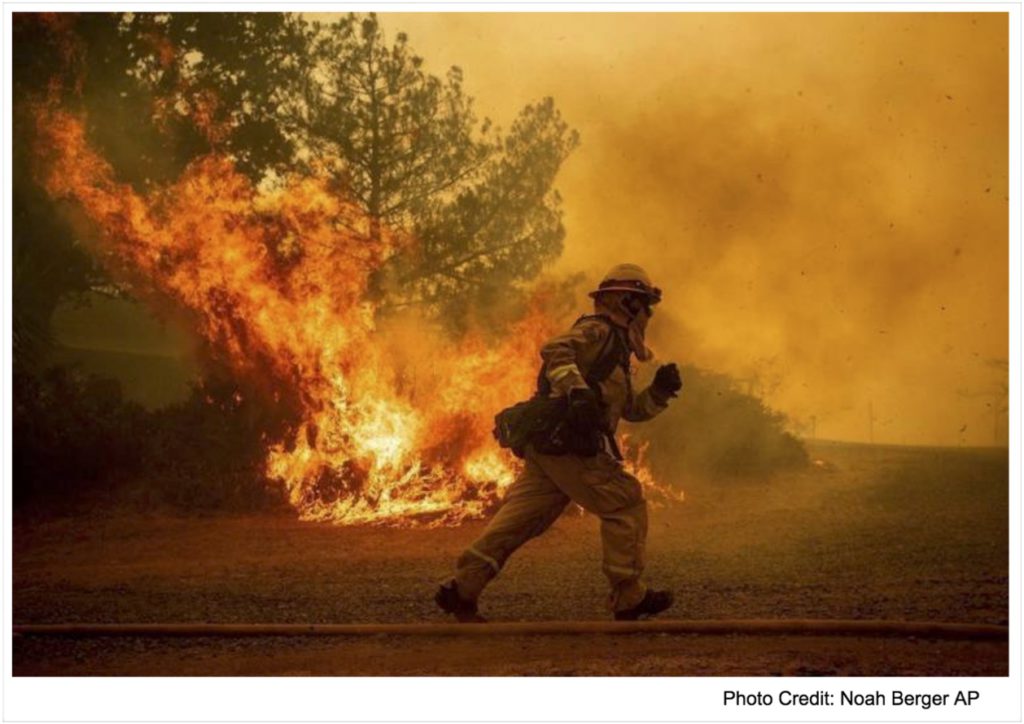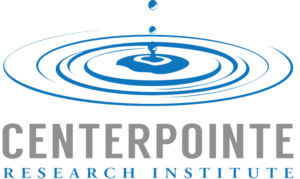- You are here:
- Home »
- Blog »
- Meditation »
- Rescue Me – Meditation for First Responders
Rescue Me – Meditation for First Responders
by Kyla, Mind Power Editor, Centerpointe Research Institute
 There’s nothing like a raging wildfire to get us thinking about what’s most important in life, and to crack open our hearts on behalf of others.
There’s nothing like a raging wildfire to get us thinking about what’s most important in life, and to crack open our hearts on behalf of others.
While most of us celebrated the Thanksgiving holiday with family and friends in the comfort of our homes, 52,000 Californians were displaced. Roughly 15,000 people lost their homes entirely, and 87 lost their lives (with hundreds still missing).
While many of us were “roasting chestnuts on an open fire,” thousands of exhausted firefighters battled blazes around the clock, and combed through debris in search of survivors.
The toll on first responders is staggering.
A spokesman for the California Professional Firefighters, Carroll Wills, said of the state’s deadly summer: “The men and women on the front lines, they’re exhausted, they’re hurting.”
Medical professionals are among the many scarred by trauma.
Hospital nursing supervisor, Antoinette Mullan, was helping save lives on the day a gunman fired into a crowd of 22,000 people at the country music festival in Las Vegas.
She reports continuing emotional breakdowns, not knowing when they will hit her.
The Terrible Toll on First Responders
Even as firefighters race toward danger to rescue people, pets, and property, they suffer devastating consequences in the line of duty, including cumulative stress that takes a terrible toll on their personal lives.

Studies show that fire firefighters and police officers often suffer PTSD symptoms that include alienation, substance abuse, heart attack, and poor decision-making.
The suicide rates among first responders is reported to be “alarming.”
One fire captain, a 20+-year veteran with the Oakland Fire Department, said that thinking about [the Ghost Ship fire] still makes him feel like he is teetering on the edge of a breakdown, according to a PBS News Hour article.
A recent article published in the Chicago Tribune, profiled 25-year veteran firefighter, Randy Globerman, who was called upon time and again to cope with other people’s traumas and disasters. The article reports that Globerman never really took account of how the experiences affected him.
Globerman, and the vast majority of first responders, police officers, and combat veterans spend their entire careers suppressing their emotions.
Like most other first responders, Globerman’s emotional struggles affected his family life. His kids would do something silly, which would otherwise make him laugh, and instead he would start crying.
So, who will rescue the rescuers?
Tools for Firefighters, Police Officers, Veterans & Medical Staff
If you’re like me, you want to do something to help the most heroic among us, but really don’t know what to do.
If you are a first responder, or have one of these amazing people in your life, you know first hand how trauma impacts daily life. One of the most powerful tools that help first responders reduce cumulative stress and its consequences is meditation.
New York Fire Commissioner and 40-year firefighting veteran, Salvatore Cassano, says he learned how to meditate after 9/11.
“I liked the results,” he said. “It’s a stressful job with little sleep. Right away, I noticed a big difference. I slept better at night and I felt better during the day.”
“I look at this as a tool in the toolbox to handle stress.”
The benefits of meditation have been documented in countless scientific studies, but nowhere are the effects more powerful than in firefighters, police officers, and combat veterans.
Ed Schloeman, co-chair of Operation Warrior Wellness, says that meditation provides first responders with a simple, powerful tool to relieve stress and develop resilience to the unexpected onslaught of traumas and emergencies which are a regular feature of a firefighter’s life.
Common symptoms suffered by first responders include alcohol abuse, high-startle response, emotional numbness and anxiety. Annette T. Hill, clinical director at Warriors Heart, says those symptoms decreased in those who used Transcendental Meditation to treat PTSD.
The Science Behind Meditation
 At Centerpointe, we know a little something about the science – and the power – of meditation. Our founder, Bill Harris, studied brainwaves and neuro-audio technology for over 30 years.
At Centerpointe, we know a little something about the science – and the power – of meditation. Our founder, Bill Harris, studied brainwaves and neuro-audio technology for over 30 years.
His groundbreaking research led him to create a technology (using a powerful form of brainwave entrainment) that allows people to “meditate like a Zen monk at the touch of a button.”
Bill named his proprietary brainwave technology Holosync®, which gives you all the benefits of long-time meditation 8 times faster than traditional meditation.
Technically speaking, Holosync calms the limbic system (fight or flight response) and strengthens the prefrontal cortex (executive function). By adding strength to the good parts and melting away the bad ones, Holosync is like bootcamp for your brain.
In the line of fire, the limbic system of first responders is on RED ALERT. The “fight or flight” response saves their lives by telling them when to hold the line, when to change strategies, and when to retreat.
Too Much of a Good Thing
Firefighters in California pushed themselves to their limits in gruelling 24-hour shifts. They were exhausted, hungry, and physically drained in the face of danger. Their heightened limbic systems were further exposed to trauma every time they encountered casualties.
This cumulative stress often leads first responders down a dark path of alienation, despair, and even suicide.
When too much cortisol is pumped through the limbic system, the brain stays in “fight or flight” even when the danger is over.
Note: This happens to all of us, in fact, and we often respond in “flight or flight” mode when we are triggered by old memories, even though the danger (the hurt) is long since gone.
Too much stress of any kind, for anyone, is dangerous not only to your emotional states, but to your health and longevity as well. It impacts your relationships, your ability to focus, and your overall level of happiness.
In Comes the Cavalry: The Prefrontal Cortex
The area of our brain called the prefrontal cortex is the hero’s hero.
It is the seat of our executive control, and home to our willpower, creativity, and focus. It also controls our threshold for stress (the higher the threshold, the less stress you feel).
When you raise your threshold, little things simply don’t bother you. Even big things can be taken in stride. If your stress threshold is low, you’ll often overreact, have knee-jerk responses, and say and do things you later regret.
You may even live in a frequent state of resentment and anxiety.
You can see why it’s so important to balance these parts of the brain.
This is exactly what Holosync seems to do. Simply by listening to soothing nature sounds, with your headphones on, the proprietary sound technology, embedded beneath the nature sounds, strengthens your executive function and calms your fight or flight response.
In other words, Holosync boosts your willpower, creativity, and ability to handle stress, while it calms your anxiety, fears, and impulsive behaviors, just by listening.
Cumulative Stress: Stigmas & Solutions
First responders are often reluctant to talk about the stress and trauma they feel, for fear of being perceived as incompetent or not up to the job. This fear, combined with the desire for camaraderie and the approval of their peers often makes them hesitant to admit they need help.

This spills into family life, which is profoundly affected by husbands and wives, sons and daughters, who are suffering from cumulative stress or PTSD.
In a KQED news article, California firefighter Lucas Boek says he felt like he was letting down his kids. He was used to being able to handle anything – he kind of felt like Superman. Now he found himself crying in the kitchen for no apparent reason.
“I don’t want my kids to think that I’m hurt or broken,” said Boek. “Even though maybe I am a little hurt and broken.”
Annette Hill, clinical director at Warriors Heart, says, “The practice of meditation calms the individual and restores a sense of control.” Meditation, she says, “helps put distance between the symptoms and the person, giving them a sense of mastery and containment.”
About Centerpointe Research institute
 Centerpointe Research Institute was founded by the late Bill Harris in 1989. The Institute produces as it’s flagship a product called ‘Holosync®,’ an audio program formulated to recreate the brain wave patterns of experienced meditators. If you use this program daily, you can achieve the same results in 8 times the time it takes for traditional meditation.
Centerpointe Research Institute was founded by the late Bill Harris in 1989. The Institute produces as it’s flagship a product called ‘Holosync®,’ an audio program formulated to recreate the brain wave patterns of experienced meditators. If you use this program daily, you can achieve the same results in 8 times the time it takes for traditional meditation.
If you would like to get a free e-book called ‘The New Science Of Super Awareness’ by Bill Harris, please visit this web site.
When you sign up, you will also be able to get the audiobook version for free. and a free demo of Holosync® as well.

